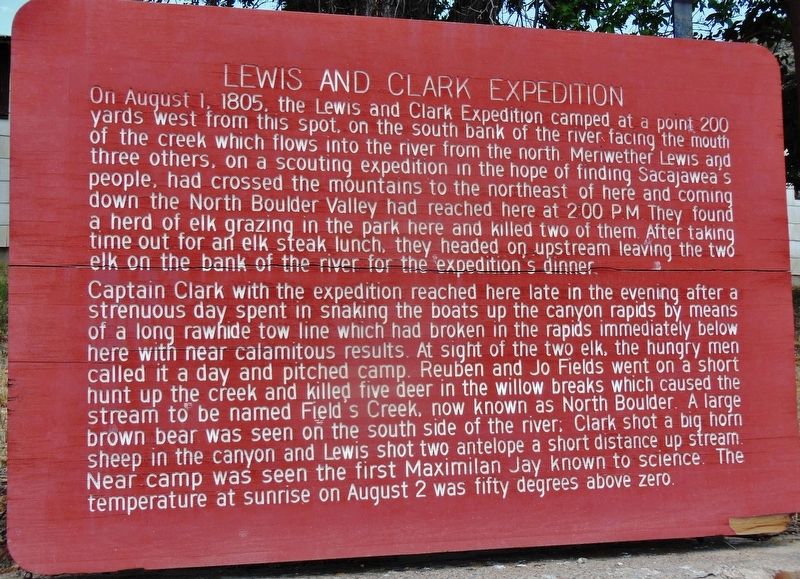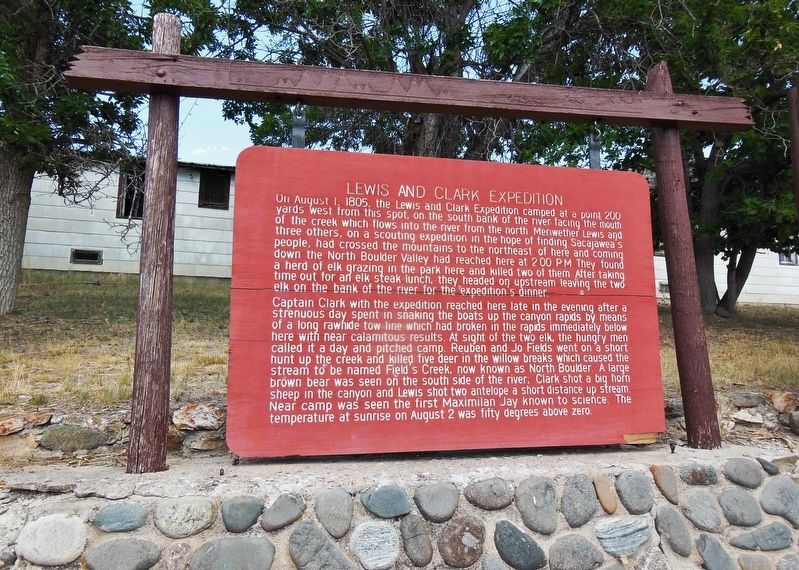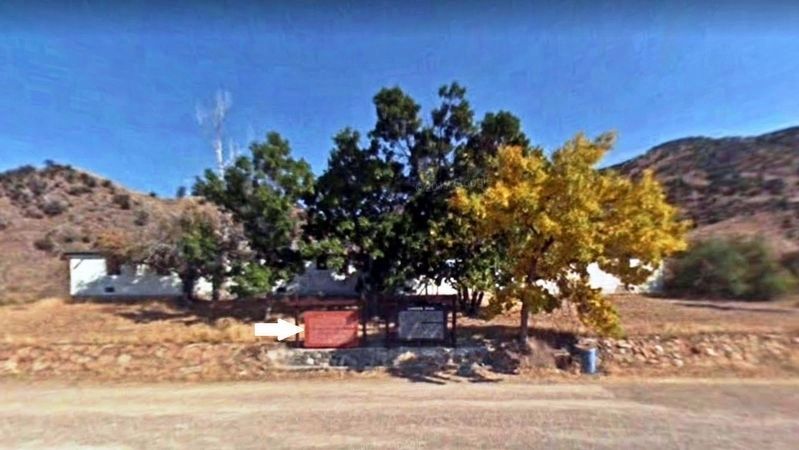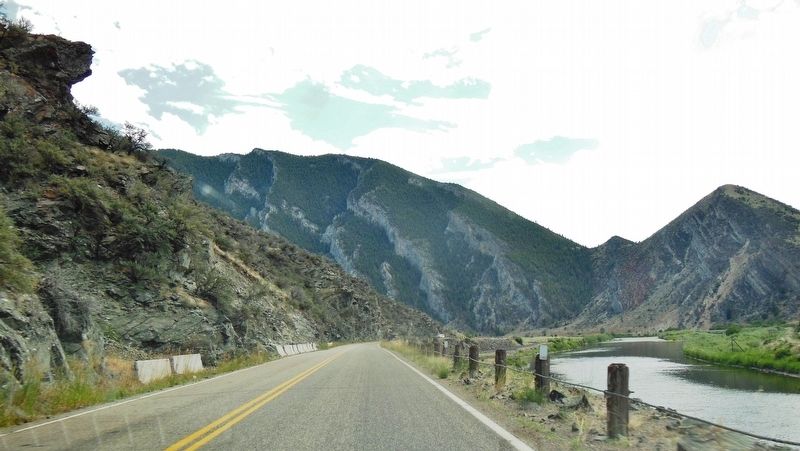Near Cardwell in Jefferson County, Montana — The American West (Mountains)
Lewis & Clark Expedition
Captain Clark with the expedition reached here late in the evening after a strenuous day spent in snaking the boats up the canyon rapids by means of a long rawhide tow line which had broken in the rapids immediately below here with near calamitous results. At sight of the two elk, the hungry men called it a day and pitched camp. Reuben and Jo Fields went on a short hunt up the creek and killed five deer in the willow breaks which caused the stream to be named Field’s Creek, now known as North Boulder. A large brown bear was seen on the south side of the river. Clark shot a big horn sheep in the canyon and Lewis shot two antelope a short distance up stream. Near camp was seen the first Maximilian Jay known to science. The temperature at sunrise on August 2 was fifty degrees above zero.
Topics and series. This historical marker is listed in these topic lists: Animals • Exploration. In addition, it is included in the Lewis & Clark Expedition series list. A significant historical date for this entry is August 1, 1805.
Location. 45° 51.196′ N, 111° 55.321′ W. Marker is near Cardwell, Montana, in Jefferson County. Marker is on State Highway 2, 3½ miles south of Interstate 90, on the left when traveling south. Marker is located in a pull-out and parking area on the east side of the highway. Touch for map. Marker is in this post office area: Cardwell MT 59721, United States of America. Touch for directions.
Other nearby markers. At least 6 other markers are within 9 miles of this marker, measured as the crow flies. LaHood Park (here, next to this marker); Bighorns no More? (approx. 2.8 miles away); Lean Times Ahead (approx. 2.8 miles away); Lewis and Clark Caverns Entrance Building (approx. 4 miles away); American Legion Fish Pond (approx. 8.6 miles away); Modern Hotel (approx. 8.6 miles away).
More about this marker. This is a large, painted wooden "billboard-style" marker, hanging from a heavy-duty wooden frame.
Also see . . .
1. Lewis and Clark Caverns / Lewis and Clark Caverns State Park. The caverns have been familiar to Native Americans since long before their discovery by Europeans. The Lewis and Clark Expedition camped within sight of the caverns on July 31, 1805, when they camped along Antelope Creek. The cavern was first discovered by non-Native Americans in 1882 by two people from Whitehall, Montana, Charles Brooke and Mexican John. The limestone cave is named after the explorers Meriwether Lewis and William Clark since the cavern overlooks over 50 miles of the trail from the Lewis and Clark Expedition along the Jefferson River, although Lewis and Clark never saw the cavern. Lewis and Clark did however pass through portions of the modern day park. (Submitted on January 8, 2019, by Cosmos Mariner of Cape Canaveral, Florida.)
2. Maximilian's jay (or Pinyon Jay). The pinyon jay was first collected, recorded and described as a species from a specimen shot along the Maria River in Northern Montana during the Prince Maximilian of Wied-Neuwied, Expedition to the Interior of North America in 1833. (Submitted on January 8, 2019, by Cosmos Mariner of Cape Canaveral, Florida.)
3. Prince Maximilian of Wied-Neuwied. In 1832 he traveled to the Great Plains region of North America, accompanied by the Swiss painter Karl Bodmer on a journey up the Missouri River. During his travels, he was a sympathetic recorder of the cultures of many of the Native American tribes he encountered, notably the Mandan and the Hidatsa, who lived in settled villages on the banks of the Missouri, but also such nomadic peoples as the Sioux, Assiniboine, Plains Cree, Gros Ventres and Blackfoot. (Submitted on January 8, 2019, by Cosmos Mariner of Cape Canaveral, Florida.)
Credits. This page was last revised on January 9, 2019. It was originally submitted on January 7, 2019, by Cosmos Mariner of Cape Canaveral, Florida. This page has been viewed 220 times since then and 18 times this year. Photos: 1, 2, 3, 4. submitted on January 7, 2019, by Cosmos Mariner of Cape Canaveral, Florida. • Andrew Ruppenstein was the editor who published this page.



